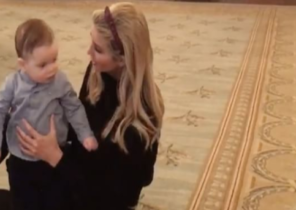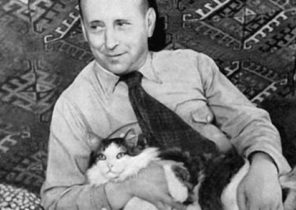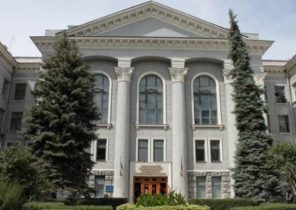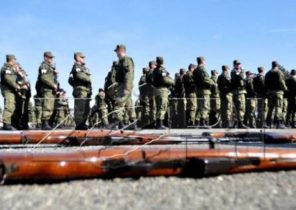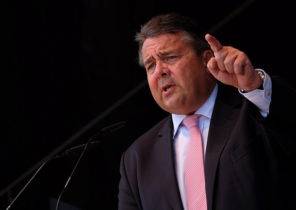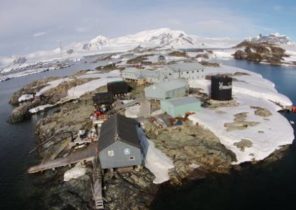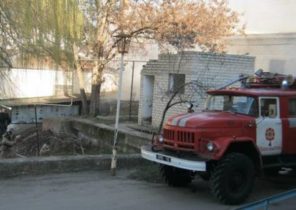The destruction of Ukrainian autonomy at the end of the XVIII century, which was accompanied by indigenous transformation of social relations, the elimination of traditional institutions of the Hetmanate, breaking its administrative structure and in the end the elimination of Zaporizhzhya Sich, meant a radical change in the situation of most social strata of the population of Ukraine and especially of its aristocratic elite. Cossack officers, Hetman officials with the spread in Ukraine of the Imperial institution took the appropriate bureaucratic positions. Many representatives of the Cossack received high civil and military officials, according to the “Table of ranks”. Some of them went to the highest stages of the Imperial career. So, Kyiv Colonel A. Bezborodko became Chancellor of the Empire and received the title of Prince. Princely honours also went to the V. Kochubey. P. Zawadowski, Secretary of the little Russian Collegium, became Minister of education and the bearer of the Ducal title. V. Troschinsky — headed by the Ministry of land and justice. Sons of the Treasurer of the General Gudovich V. A. Gudovich — General-in-chief, I. Gudovich — the General-field Marshal, Earl, of the Kiev Governor-General, A. Miloradovich became Governor of the Chernigov governorship, M. miklashevskii — civil Governor of the province of Ruthenia, etc.
Adjustment of Cossack rights with the Russian nobility was a component of a policy aimed at the elimination of specific socio-economic rights, individual regions of the Empire, something which still retained the national public relations and has expressed opposition to a unitary and centralist grading policy of Russia.
Most of the historical velikopolsky families associated with the Hetman, kept the traditional loyalty to the Russian monarchs. It was not a random phenomenon but rather the result of complex processes in the higher layers of the Cossack aristocracy, which has long fluctuated between the two tendencies of development of the Hetman’s power. One of them, expressive of the national monarchy, founded by B. Khmelnitsky, tended to transform the Hetmanate into the Institute of hereditary dynastic one-man rule. The other showed the intention of the approval of the election as Hetman of the Institute of Cossack petty oligarchic system of democracy on the Polish model.
However, as we know, the development trend of monarchical signs of the Hetman’s power in Ukraine is not consolidated. The concept of Ukrainian autonomy in the Russian Empire became the basis of the ideological position of the descendants of the Cossack. Over time it was supplemented by Autonomous-federalist vision of the Ukrainian intelligentsia, which was formed under the influence of Western social and political thought.
The failure of Ukrainian elites to develop and inculcate national monarchical idea of the Ukrainian society has created a vacuum in public consciousness, which filled the Russian monarchy. This situation has resulted in numerous Ukrainian aristocratic families, the national feelings are intricately intertwined with loyalty to the Russian monarch. While their relationship with Ukraine was not torn, it was manifested in different forms of economic activity, close ties with the peasant environment, active perception of colorful Ukrainian spirituality. In particular, Hetman Pavlo Skoropadsky emphasized that his family was loyal to the Russian tsars, “but emphasized somehow that we are not great Russians, and little Russians, as they said, of noble origin”.
Since 1654 the Russian tsarist government tried in every way to overcome the particularism of the Ukrainian Cossack elite. Perhaps the first of her environment on these intentions responded Hetman Ivan Bryukhovetsky, who married the Russian Princess Darya Dolgoruky.
In the future, a Ukrainian Cossack-officer family entered into family ties with prominent members of the Russian aristocracy. However, for many of them “little Russian origin” was a source of pride and stimulated the preservation of national traditions. It is noteworthy in this context was the realization by many Ukrainian clans historical significance of their families, their superiority compared to the new Russian family. An example is again the relationship of the family of Hetman Pavlo Skoropadsky.
On the eve of the wedding with Alexandra Petrovna Durnovo, who belonged to one of the most famous aristocratic families of Russia, Hetman wrote to his brother: “You’re absolutely right in assuming that I am supposed to get out of the family, a decent man from a family like ours, does not work, and brings in his wife, who, if she likes (which I doubt), shares all the beliefs and moral concepts of the husband’s family… you know my attitude to Durnovo, and you know how much we are all proud of…”
Aleksandra Petrovna Durnovo, as the mother of Hetman Maria Andreevna Miklashevskaya, tied Skoropadskyi with known families of the Russian aristocracy — Olsufyevna, Vasilchikova, Saltykovym, Policyname etc. However, many of them had estates in the Ukraine, has grown into the life of the Ukrainian Cossack Hetman of the elite and are unable to perform their tsarist Russification task.
Expressive Ukrainian sympathy showed, in particular, the Governor of left-Bank Ukraine, a descendant of the Chernigov princes (descended from the family of Volkonsky) Prince Nikolai Repnin. He consistently as possible in terms of the centralist Russian Empire, defended local interests, protected the peasants from the abuse of the landlords, was a project to restore Cossack regiments, sympathized with the autonomist movements of the descendants of the Cossack. Added to this is his interest in Ukrainian history, assistance in the edition of “history of little Russia” by D. Bantysh-Kamensky. Sincere love to Ukraine, attempts to preserve its ancient traditions aroused the suspicion of bureaucratic St. Petersburg to the little Russian separatism and eventually eliminating Repnin from the post of Governor-General.
The rest of his life he lived in his estate in Yagotin, where in 1843-1844 he was visited by Taras Shevchenko, to which the Prince and his daughter Barbara were treated with deep respect and affection, friendly feelings. It is no coincidence that among Ukrainian autonomist elite 20-30-ies of the Prince was considered the most likely candidate for the Hetman of Ukraine.
So, mixed Russian-Ukrainian marriages not always give the assimilating effect, which counted on the Russian autocracy. They are not prevented many Ukrainian aristocratic families to protect national cultural tradition, which was transformed in 1917-1920 in political activities aimed at restoring conservative forms of Ukrainian statehood.
